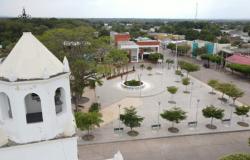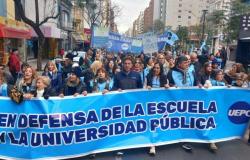Despite the extension of the harvest in search of increasing the manufacture of sugar for national distribution, the province will remain below the planned production
Illustration: Osval.
Sugar has been manufactured on a well-extended calendar, but it is almost a sin to say that a harvest has been done; In May it was only milled for 13 days. The men and women involved in the fight have taken a knee, but production—until this week—was around 16,000 tons, around 75 percent of what was planned in Sancti Spíritus.
Right now, it is not a question of having a single industry in operation; The crux is that the mill uses the milling capacity at 30 percent, half of what was initially conceived and, five and a half months after the start-up, there is still an appreciable amount of raw material included in the harvest to be cut. . Nor is the fact that a central plant works and the sugar plan is small synonymous with a simple harvest.
Such an edge illustrates the reality of a conflict that will have to stop at any moment. It also reveals the behavior of the most agonizing harvest that the province has experienced in recent years. The harvest was born at the end of December, hampered by a lack of resources, and went into extra-inning in March; The sugar has been manufactured in dribs and drabs and for some time now the grinding has not exceeded a handful of hours, every two or three days, when the mill accumulates cane, with weeks of grinding only twice.
In the midst of such a panorama, Sancti Spíritus remains below the planned production. Even so, the campaign entered June given the interest in increasing the crude oil inventory for national distribution.
Nobody thinks that the sugar producers fought with that praise that they earned in good fight decades ago: “The people of Sancti Spiritus know how to harvest.” It almost borders on incredible that in the midst of so many resource limitations, moments of having more combined stops than cutting, where the forces of harvesting and transportation juggle to move the cane to the tilter and the center rarely reports grinds greater than the 12 hours, the harvest in Sancti Spíritus can exhibit decent indicators, some of which are listed as the best in the country.
Behind the fine work of energy self-sufficiency and delivery of electricity to the national system, industrial performance and the use of the potential yield of sugarcane; Behind the factory operation and, even, the low levels of raw materials that are cut with patched machines in fields that intersperse weeds and seedlings, is the human intention to straighten a harvest that before it began looked like a lost game and will end in full spring with the lowest production in the history of Sancti Spiritus.
In tune with the reality of the country, between financial fences and external measures designed to suffocate the economy, with internal projections in the sector that will do little without resources, with fuel items that do not guarantee daily rhythms in the harvest, slowing down land preparation and they do not allow sugarcane planting to be brought forward, it is a chimera to look at past times.
It is not even about admitting the complex conflict that the territory has experienced, fraught with limitations and obstacles from the first moment; much less, judge the campaign from the stands, because it would be disrespectful to attribute the results of the bitter harvest in Sancti Spíritus to those combine operators dressed in rag diving suits to escape the picapica; or to those industrial workers who have spent months waiting for cane to grind more.
Perhaps someone thinks that because there is only one open plant, there may still be sugarcane left in the province’s mill balance in June to be cut; However, a question arises: why has the Tuinucú mill only milled at 30 percent of capacity? Within this 70 percent of wasted time there are industrial causes that urgently need to be addressed, since more than 20 percent of the lost time is attributable to the factory; On the other hand, most of that time without grinding is shared between the lack of fuel, oil for the combines and the impact of the rains on the fields.
Today the problem is not whether they grind one or both centers; The urgency is of a different kind: it has not been possible to cut the little cane that the territory has and which was only enough to plan a sugar production of around 21,000 tons—lower than the actual amount of the previous harvest. With stumbles and decent efficiency, the central defender is there, but he lacks food; So, don’t even think that Uruguay, with its superior capacity, was in action.
The harvest has been so twisted that the greatest weakness so far this century, the lack of raw materials, is not even noticeable given the impossibility of harvesting the plantation brought to the estimate.
It is of little value to have the entire mechanized, automotive and railway device of the province based on the Tuinucú ingenuity if there is no daily guarantee of fuel; Due to the territorial extension, the harvest without oil does not exist. The fight around Melanio Hernández has so many little pieces that it becomes a puzzle to put together this gear for cutting and shooting cane from fields belonging to both Fomento and Trinidad; south of Sancti Spíritus or Jatibonico; next to Majagua, in Ciego de Ávila or, in Carrillo, Villa Clara. The harvest depends a lot on the furthest cane.
A conflict full of ailments does not need an autopsy, because it is the trace of the enormous complexities that the country is experiencing, of the shortcomings that exceed the will of a State.
An unfulfilling and productively short harvest does not bring applause, but no one can ignore the determination of the Sancti Spiritus sugar growers to harvest in the midst of the storm.
It is obvious that the need for sugar causes the lengthening of the contest, but, be careful, such a long extrainning puts the mill’s repair calendar at a crossroads for the second consecutive year; This is not a secondary issue, but rather a dangerous one, in the face of the productive continuity of the plant.
Beyond the tons of sugar that these days of the watered-down harvest add up, the red light bulb in the sector in the province lights up around the planting of cane, also stuck due to the lack of fuel. The growth of the crop extends the pause for another year and the most objective thing is to try to sow the seed of 2025; Otherwise, the risk of the survival of the plantation lurks on the horizon. It is enough to know that the province only occupies 40 percent of the area dedicated to sugar cane and, of that, a part does not have quality.






